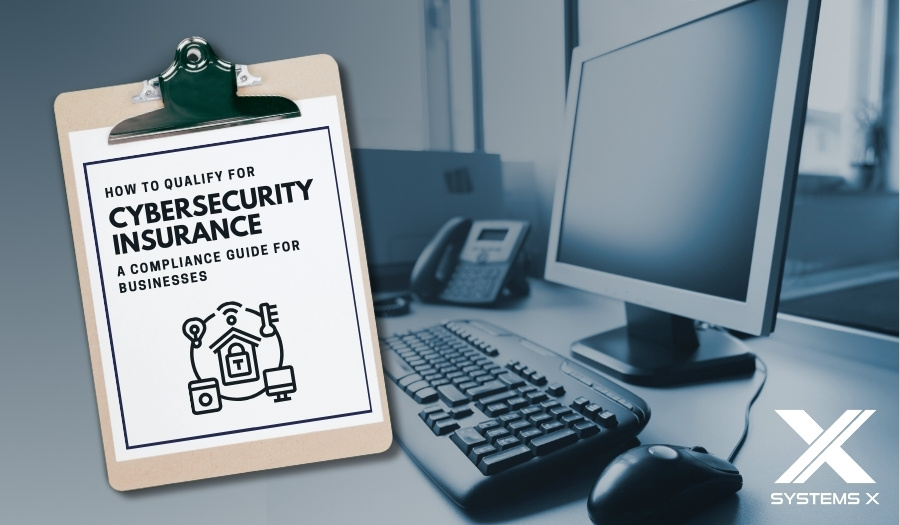
How to Rise Above 7 Common IT Issues Businesses Encounter
Operating a business often involves dealing with several recurring IT challenges that can disrupt operations and cause frustration. However, it's...
3 min read
 Mike Brattain
:
Dec 1, 2023 8:00:00 AM
Mike Brattain
:
Dec 1, 2023 8:00:00 AM

The threat of ransomware looms large over businesses across various industries, with the latest insights from the Verizon 2023 Data Breach Investigations Report underscoring its pervasive nature. Organized crime actors are behind more than 62% of ransomware incidents, while financial motivations drive 59% of such cases.
Having an incident response plan in place is essential to ensure the safety of an organization's digital assets and overall security. Due to the continuous evolution of cyber threats, a well-defined plan is no longer just a precautionary measure, but an absolute necessity. As cyberattacks, particularly those involving ransomware, are becoming more prevalent, companies need to take a proactive approach.
By implementing a well-structured plan, organizations can respond swiftly and efficiently in the event of an attack. An established incident response team enables companies to quickly assess the situation, contain any potential damage, and work towards restoring systems to normalcy. This approach minimizes downtime and data loss. The impact is often measured in terms of the amount of data protected from compromise. In addition to operational considerations, an incident response plan assists organizations in navigating the legal and compliance landscape associated with cyber incidents.
An effective incident response plan meticulously outlines your organization's strategy and specific actionable steps for detecting, containing, mitigating, and recovering from cyber threats, including ransomware attacks. This strategy should encompass activities such as risk assessment, detection, in-depth investigation, and seamless restoration. By following these steps, your organization can effectively streamline its incident response process, mitigate the impact of any potential incidents, and maintain business continuity:
For an effective ransomware response plan, it is vital to establish clear objectives and identify the systems and data that will be impacted.
Formulate an incident response team comprising IT, cybersecurity, legal, and executive leadership experts. Assigning roles and responsibilities within the team ensures a coordinated response to ransomware incidents.
Craft a framework for classifying ransomware based on severity and impact. This aids in prioritizing responses and resource allocation in the event of an attack.
Implement robust monitoring and detection systems to identify ransomware infections early. Employ intrusion detection, anomaly detection, and anti-malware solutions to flag potential ransomware dangers.
Define procedures to isolate affected systems, preventing the spread of ransomware. Develop protocols for investigating and thwarting malicious actors, ensuring the quarantine of affected systems.
Establish a recovery plan for data and system restoration post-ransomware attack. Regularly back up critical data and test the restoration process for effectiveness.
Develop communication protocols for both internal and external stakeholders during ransomware incidents. Specify when and how to notify employees, customers, and regulatory authorities. Maintain open lines of communication throughout the response plan.
Collaborate with legal counsel and law enforcement to understand the legal and regulatory implications of ransomware. This includes data breach notification requirements and the consequences of paying the ransom.
Document all actions taken during the process, including containment, eradication, and recovery efforts. Prepare incident reports for post-incident analysis and regulatory compliance. Regularly review and update the plan to accommodate changes in technology, threats, and organizational structure.
Regularly train the incident response team and relevant employees on the ransomware response plan. Conduct tabletop exercises and simulations to ensure preparedness for an effective response to a ransomware attack.
Employ anti-malware with machine learning and AI capabilities to effectively identify the multitude of threats generated daily.
2. Enhance Email Security and URL Filtering:
Update countermeasures to detect and filter threats before they infiltrate your system.
Monitor and log activities across infrastructure using tools like Data Loss Prevention (DLP) and Endpoint Detection and Response (EDR) to identify malware, intrusions, and unauthorized access.
Eliminate network exposures, harden endpoints by disabling unused services, and segment internal networks.
Strengthen password and access management practices, restricting access to systems containing admin tools and sensitive data.
Regularly assess and update defenses and mitigation strategies using the NIST framework.
 Attack Mitigation and Recovery
Attack Mitigation and Recovery
At Systems X, we have a team of cybersecurity experts who are dedicated to helping you create a strong incident response plan that is specifically tailored to meet the needs of your organization. Our team has a wealth of experience in cybersecurity, and we are skilled at developing comprehensive strategies that are aligned with your goals. We take a proactive approach to cybersecurity, using advanced tools and techniques to detect, contain, and mitigate cyber threats, including those posed by ransomware incidents.
When you partner with Systems X, you can trust that we will work closely with you to enhance your cybersecurity resilience and respond quickly and effectively to potential threats. Let us empower your organization with a customized incident response plan that is designed to withstand the ever-evolving landscape of cyber risks.

Operating a business often involves dealing with several recurring IT challenges that can disrupt operations and cause frustration. However, it's...

Cybersecurity insurance has become a crucial safeguard for businesses of all sizes. However, meeting specific compliance standards is critical in...

Cyber insurance has emerged as a crucial component of risk management, offering financial protection against the potentially devastating consequences...